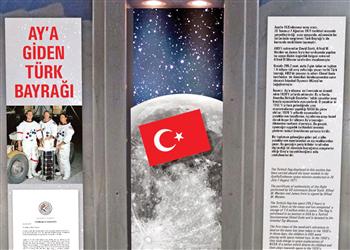Turkey Moves to Keep Air Defense Competition Open to US, European Bidders
 ANKARA — After a stunning decision to select a Chinese contender to build Turkey’s first long-range air and missile-defense system, Ankara has moved to keep the competition open to European and US bidders that came second and third, respectively. The Turkish government has asked the European and US bidders to extend the validity of their bids, a sign that the game is not yet over for these two. The fourth bidder, a Russian manufacturer, had been eliminated from the contest.
ANKARA — After a stunning decision to select a Chinese contender to build Turkey’s first long-range air and missile-defense system, Ankara has moved to keep the competition open to European and US bidders that came second and third, respectively. The Turkish government has asked the European and US bidders to extend the validity of their bids, a sign that the game is not yet over for these two. The fourth bidder, a Russian manufacturer, had been eliminated from the contest.One procurement official familiar with the program said the Turkish request for the extension means that the two bidders that came second and third have chances to win the contract. “This [move] formalizes the de facto situation that we intend to keep [the European and US bidders] in the game in case things went wrong with the Chinese,” the official said.
“When these bids are submitted, everyone says their bids are valid until a particular date in terms of price and the date of delivery,” Turkish Defense Minister Ismet Yilmaz told state broadcaster TRT on Nov. 8. “If there is a deadlock with the first [Chinese] bidder we will turn to the second bidder.”
Turkey announced on Sept. 26 that it selected China Precision Machinery Import-Export Corp. (CPMIEC) to build the country’s first long-range air defense architecture, sparking a major dispute over whether the Chinese-built system could be integrated with the NATO air defense assets stationed in Turkey.
The Chinese contender defeated a US partnership of Raytheon and Lockheed Martin, offering the Patriot air defense system; Russia’s Rosoboronexport, marketing the S-300; and the Italian-French consortium Eurosam, maker of the Aster 30. Turkey has said Eurosam came second in the competition, Raytheon third and the Russian solution was eliminated.
Murad Bayar, Turkey’s top procurement official, said the Chinese offer was priced at US $3.44 billion. CPMIEC is under US sanctions for violations of the Iran, North Korea and Syria Nonproliferation Act.
The Turkish program consists of radar, launcher and intercept missiles. It has been designed to counter both enemy aircraft and missiles. Turkey has no long-range air defense systems.
About half of Turkey’s network-based air defense radar picture has been paid for by NATO. They are part of the NATO Air Defense Ground Environment. Without NATO’s consent, it will be impossible for Turkey to operate the Chinese system with these assets, some analysts say.
To defend against missile threats, Turkey needs satellite and dedicated ballistic-missile detection and tracking radar, such as the NATO radar deployed last year in Kurecik, in southeastern Turkey.
For the anti-aircraft component, Turkey needs an overall picture for data fusion. The Patriot system, for instance, can detect threats with its own radar. So does the Chinese system. But without integrating into a full air picture, the Chinese system could not work efficiently, analysts said. ■
Last modified onSaturday, 06 May 2017 10:07
Latest from Admin TOA
- Fat Sal’s Italian Specialties Welcomes Customers in Bayville, NJ with a Renewed Concept
- FFD Wood LLC Delivers Custom Woodwork Solutions from Long Island
- A Tax Expert in the U.S. Tax World: An Interview with Samet Oynamıs
- Announcing the 2025 Edition of the 100 Most Influential Turkish Americans
- CEO Club New York Networking Night Stands Out with the Lamborghini Experience









